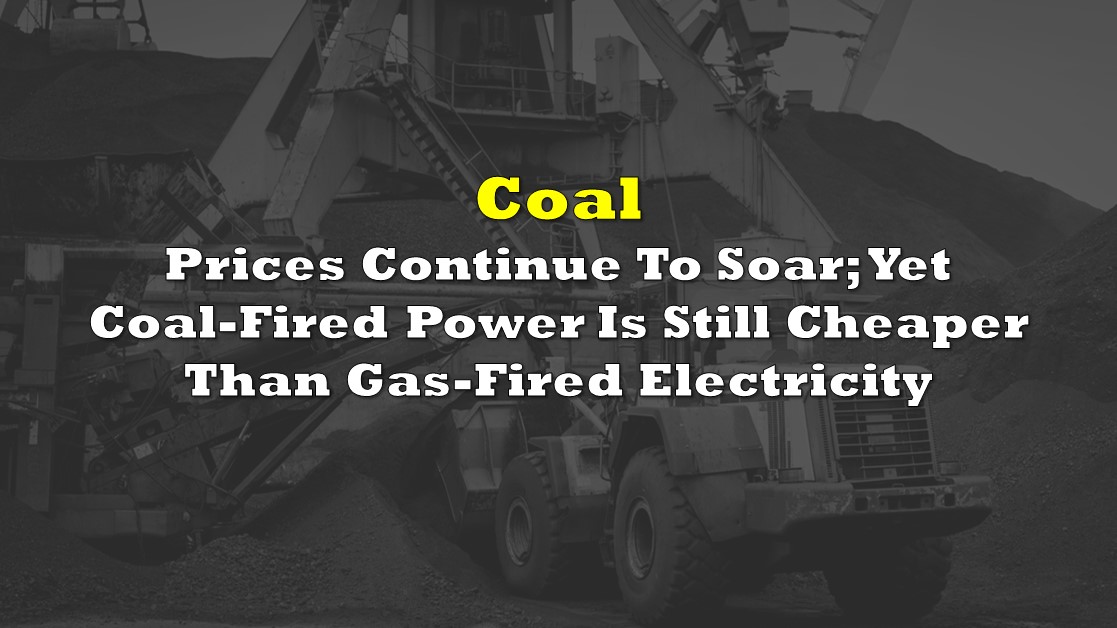Remarkably, in a world where dire warnings of the impact of climate change are issued daily, frequently in connection with the recent series of extraordinarily high temperature readings across much of North America and Europe, global demand for and usage of coal continues to soar. Quite understandably, coal prices — and the profits for coal miners — are rising even faster than demand.
According to BP (more commonly known as British Petroleum), coal-fired power generating units produced a record-high 10,244 terawatt-hours (TWh) of electricity in 2021, and are set to exceed this figure in 2022 and perhaps again in 2023. A key reason for this is the resultant explosion in natural gas prices after Russia invaded Ukraine. Russia supplied perhaps 40% of Europe’s gas prior to the war’s commencement. In turn, European and Asian utilities have turned to lower-priced coal both to bridge this gap and to minimize costs.

As a consequence, the price of coal has spiked. Australian coal futures trade at US$400 per tonne, up from an equilibrium price range of US$50 to US$100, which held from 2012 through 2020. A data point which, if true, corroborates the spike in global interest in coal: the Taliban Government in Afghanistan, which produces low-quality coal and is not considered the most reliable counterparty, reportedly has increased its ask price for coal to US$200 a tonne from US$90.

Even trading at much higher prices, coal is still a bargain versus natural gas in Europe for power generation. An incremental megawatt-hour (Mwh) of electricity produced by a coal-fired plant is about two-thirds cheaper than that produced via gas-fired generation.
(As an aside, European natural gas priced at 157 euros per Mwh equates to a price of around US$47 per thousand cubic feet, or Mcf. Natural gas in the U.S. trades at about US$8.30 per Mcf.)

To illustrate the (presumably fairly) temporary boost in cash flow that global coal companies will realize from the higher coal price regime, consider Peabody Energy Corporation (NYSE: BTU). Headquartered in the U.S. state of Missouri, Peabody is a leading producer of both thermal and steel-making coal.
On July 14, Peabody reported preliminary, unaudited results for 2Q 2022. The company expects to report revenue in the quarter of just over US$1.3 billion, and adjusted EBITDA of US$570-US$590 million. Keep in mind that Peabody’s enterprise value (EV) is about US$3.4 billion, so that the ratio of the company’s EV to just its 2Q 2022 adjusted EBITDA is less than 6x (or 1.5x if one were to annualize the unusual 2Q 2022 figure). This valuation ratio is extremely low.
Information for this briefing was found via the companies mentioned. The author has no securities or affiliations related to this organization. Not a recommendation to buy or sell. Always do additional research and consult a professional before purchasing a security. The author holds no licenses.








